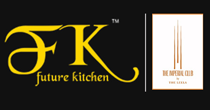THE CASE OF BACK SQUATS AND BARBELL DEADLIFTS
As coaches we seem to have this major need for people to back squat and deadlift. For most the ability to back squat is dictated by mobility issues and mechanical issues. Many suffer from excessive thoracic rounding which is a combination often of hip and posterior chain issues, tightness in the chest, internal rotation, and the inability to retract and depress the scapula adequately. All of these issues are generally accompanied with a compensatory forward head tilt (look at the line of the ear and it’s relationship to the middle of the shoulder).
Most people struggle like hell to simply get under the bar because they can’t grip the damn thing or externally rotate the shoulders far enough to place their hands on the bar with reasonable purchase to allow engagement of the lats and to stabilize the spine. When they do and if they can the first thing that happens is the elbows ride up behind the body as they sit into the squat and therefore the head drops (violently looking up doesn’t mean the problem is fixed btw), the hands generally end up only stabilizing the bar with fingertips.
Let’s take these same issues and move them into a barbell deadlift which again is an internally rotated movement which means the hands are pronated (turned over). This encourages the scapula to elevate (lift up) and protract (pull the shoulders forward) when most people actually need to posturally depress (pull down) and retract (pull back) the scapula somewhat to help eradicate the thoracic rounding and the aforementioned problems. First thing that happens with most people in a deadlift is the scapula protract, the head drops (scapula elevate) and therefore the pelvis compensates by tucking under and shutting off hip extension therefore moving the load into the erector spine to posturally compensate and utilise back extension instead of the hip and knee extension that should sequentially occur. Cuing someone to lift their chest up often moves them into back hyperextension and therefore an unstable position to begin either the back squat and barbell deadlift. A braced position isn’t achieved in either excessive flexion or extension so this is more to do with the spine being neutral (for the individual) and the ‘core’ braced. Pack down through the abs as if tensing them.
Both dumbbell squats and trap bar deadlifts allow a semi-supinated grip and encourage both a stronger scapula depression and retraction. In the dumbbell variants many will want to internally rotate the hands sweeping the dumbbell across the front of the body. Again depression and retraction of the scapula force the stabilizing and postural muscles to work both better and harder. Both of these variants will also allow those with longer limbs to stay in the much more advantageous hip extension and over time strengthen the mechanical position required for effective and competent movement in both the back squat and barbell deadlift. Variations of the front squat are also a nice addition as the position of the arms either in Olympic or bodybuilding style force the thoracic spine out of flexion (otherwise the bar slides forward). You WILL sacrifice weight with all of these movements but long term they WILL improve both their effectiveness and safety of back squat and the execution of barbell deadlifts. Therefore eventually stronger lifts.
Improving thoracic mobility is complementary as is improving shoulder mobility particularly in external rotation. Effective coaching of hip extension through the use of RDL, good morning and waiters bow variants is a must in most cases.
Improving the mechanics of an individual long term leads to safer exercise prescription and allows us to use our entire exercise library. There appears to be an inherent need in coaching to include these two GREAT movements too early. Set the stage before stepping on it!










